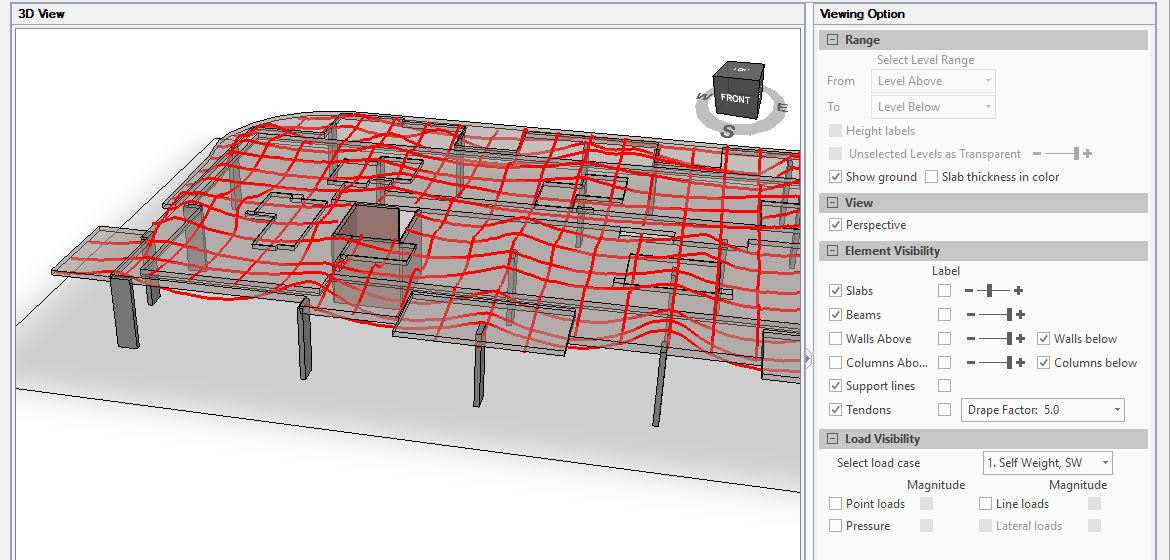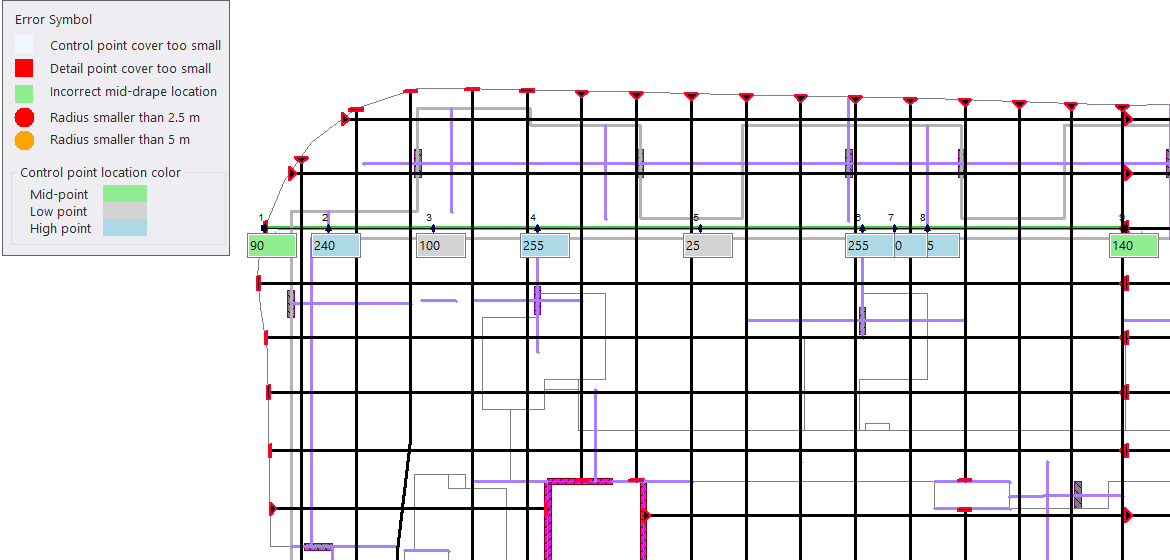PTD Overview
PTD is a finite element analysis and design software for post-tensioned concrete slabs. Slabs of any shape can be analysed including suspended slabs and slab-on-ground. It has been developed in close coordination with leading Australian structural engineers specialising in post-tensioned slab design with the aim of not just providing a powerful analytical tool but speeding up the entire post-tensioned design and detailing process.
PTD builds upon its predecessor PT3D, which has been used for 15 years by Australia’s consulting engineers, forming an integral part of their daily design, whilst incorporating the local design practices and traditions.
Structural models of any shape can be quickly created or imported from CAD or REVIT files or from other INDUCTA programs. Common information is input once and transferred between INDUCTA programs.
Preliminary design can be performed before laying out tendons to estimate how the slab will deflect with post-tensioning. Laying out the tendons is very fast with the tendon profiles being generated automatically based on defined high point locations and automatic generation of the design strips.
Two way action is automatically considered with P/A stresses and uplift calculated at transfer and at work. Short and long-term losses are displayed graphically and in a detailed report, and tendon extension reports and material quantity reports are all available.
Tendons can be quickly modified in section or in plan, and minimum cover can be checked not just at the high points and low points but at the location of steps in the slab too. Tendon clashing can also be viewed in in section or in plan.
PTD can produce post-tension shop drawings and post-tension structural drawings, as well as label tendons, so once a tendon layout is finalised in PTD, there is no need to redraw it in another CAD package.
Be it preliminary or detailed design, PTD offers a wide range of fast and intuitive modelling, analysis and design tools suitable for any post-tensioned concrete floor system.
Features

AS 3600 - 2018
Includes the latest version of Australian Standards for design of concrete structures.

Preliminary Design: with Tendons
Perform quick preliminary design checks on the slab, while also considering tendons. Produce realistic results without the need to detail tendon profiles.

Automatic Tendons
Instantly draw tendons in both directions. Use this tool together with Preliminary Design with Tendons to perform quick preliminary design checks.

Preliminary Design: No Tendons
Apply a constant P/A and uplift on the entire slab to provide initial estimate of deflections before tendons are laid out.

Beam Design
New wide beam design module produces comprehensive design output for every section along the beam.

Automatic Mesh Generation
Finite element mesh is automatically generated to modelled structural elements without the need to manually specify mesh subdivisions.

Tendon Profile Editor
Modify the automatically generated tendon profiles either in section or in plan.

Curved Tendons
Model both straight and curved tendons. PTD will automatically consider the in-plane force in the slab due to the curve in the tendon.

CAD and REVIT Import
Import individual floors using CAD files or REVIT files.

Shop / Structural PT Drawings
Label tendons and export their profiles to dxf to create either shop drawings or structural drawings.

INDUCTA Modelling Concept
Freely model structures of any shape and orientation without specifying a working grid or creating beam strips.

Beam and Band Beam Design
Beams and Band beams can be defined in any direction within a model and are fully integrated in the 3D floor system. A comprehensive design report is also produced.

Punching Shear Check and Design
Automatically calculate the punching shear perimeter, check punching shear and design any extra steel if needed considering stresses in both directions.

Tendon Extensions
Compare on-site extensions with those calculated by PTD.

Reinforcement
PTD designs extra top and bottom steel in the slab (in both orthogonal directions) and in all beams (bending and shear).

Losses Calculations
Instant and long term losses are automatically calculated based on in-plane elastic analysis of the entire floor. Losses are displayed graphically or in a detailed report.

Stresses
Display P/A stresses on-screen for transfer and working. Areas of low stress are highlighted.

Deflections
Calculate the deflections based on kcs method or using Eurocode 2 approach.

Slab Steps
Easily control the slab profile and display slab steps on screen (top and bottom).

Slab-on-Ground
Model the soil using simplified springs (Winkler model) or using soil structure interaction in a linear elastic half-space to design slab-on-ground.

Two-Way Action
The plate finite element analysis used in PTD automatically considers two-way action and can be used to model slabs of any shape without making assumptions about load path.

Automatic Import / Export
Quickly import / export floors from and to RCB and SLB. Common data is input once and transferred across to all other INDUCTA software.

3D viewer
View the structure in 3D and supply clients, architects and builders with the standalone 3D viewer allowing them examine your 3D model.

Tendon Clashing Check
Check tendon clashing on plan or in section to ensure that an optimal tendon layout is produced.








